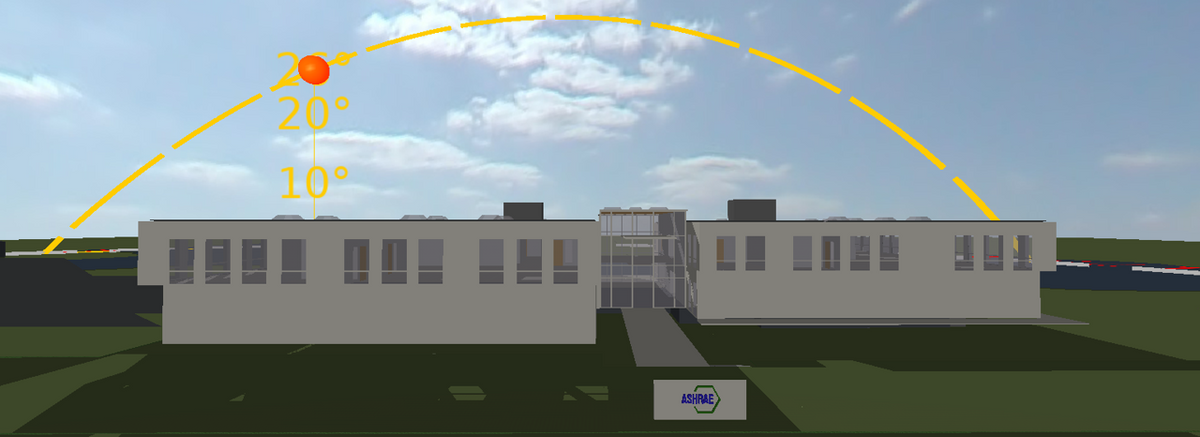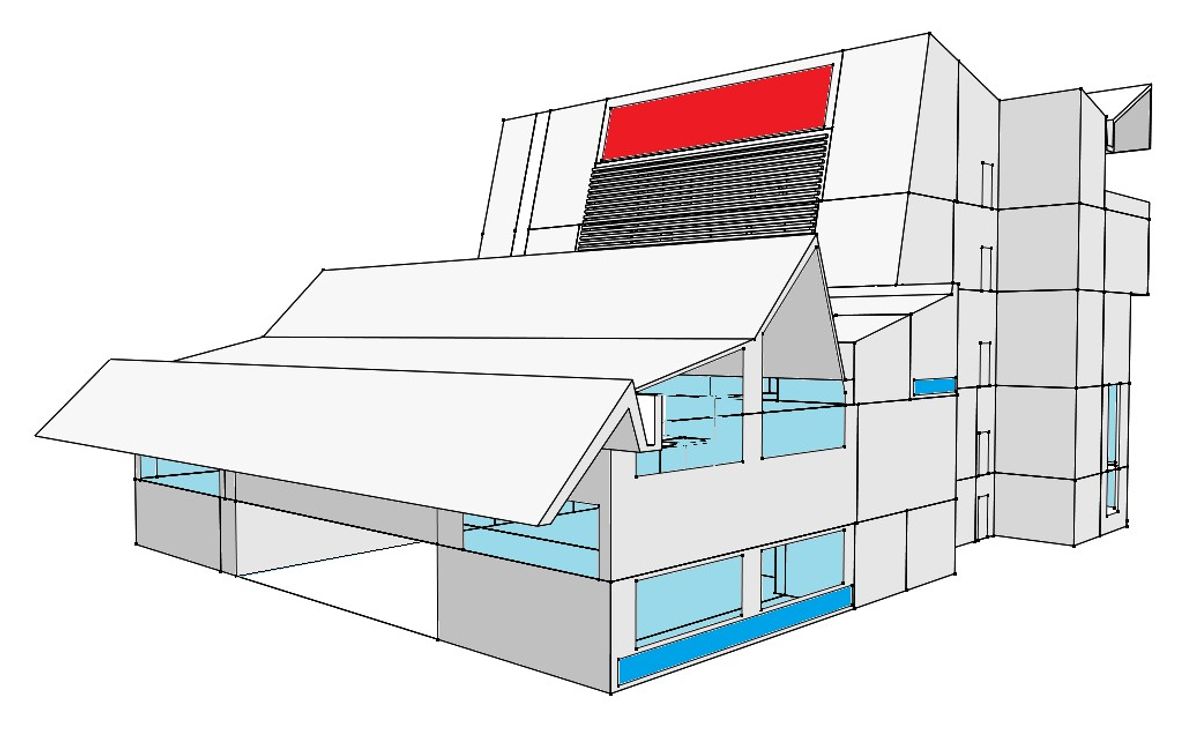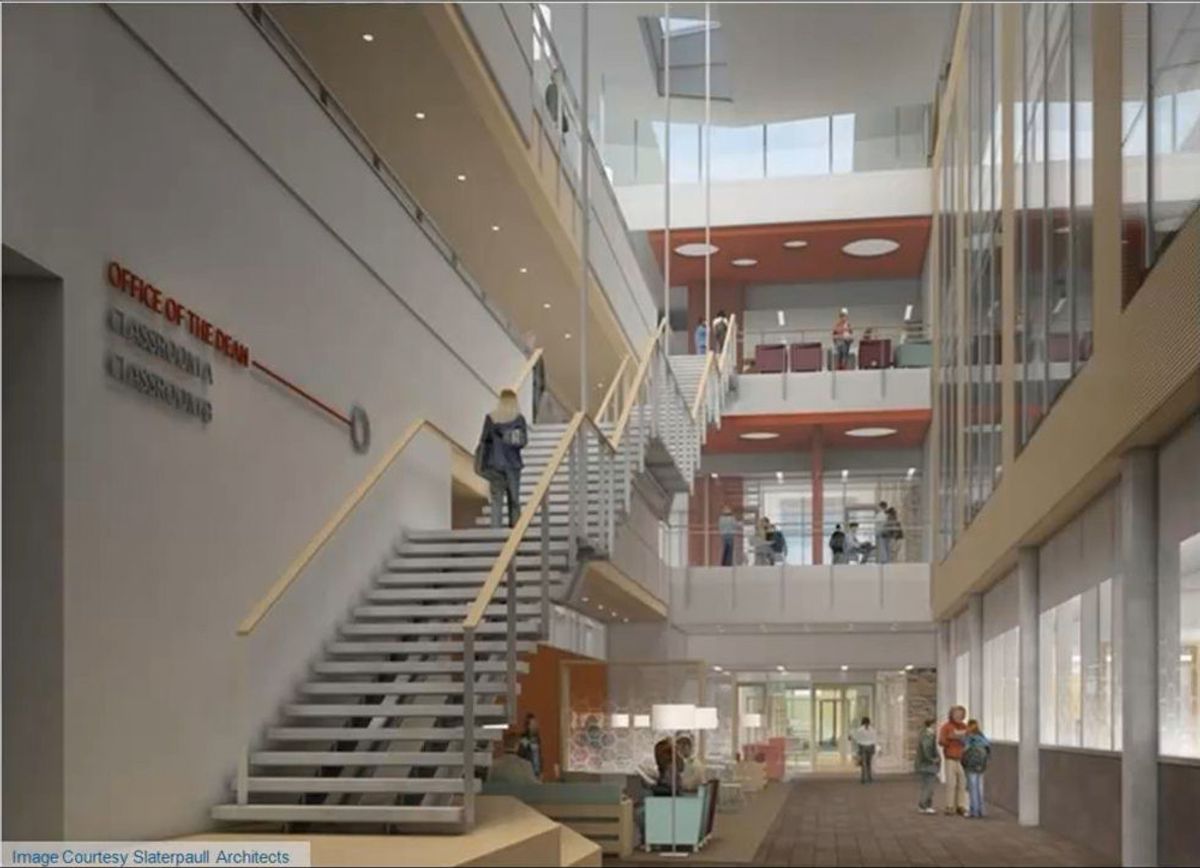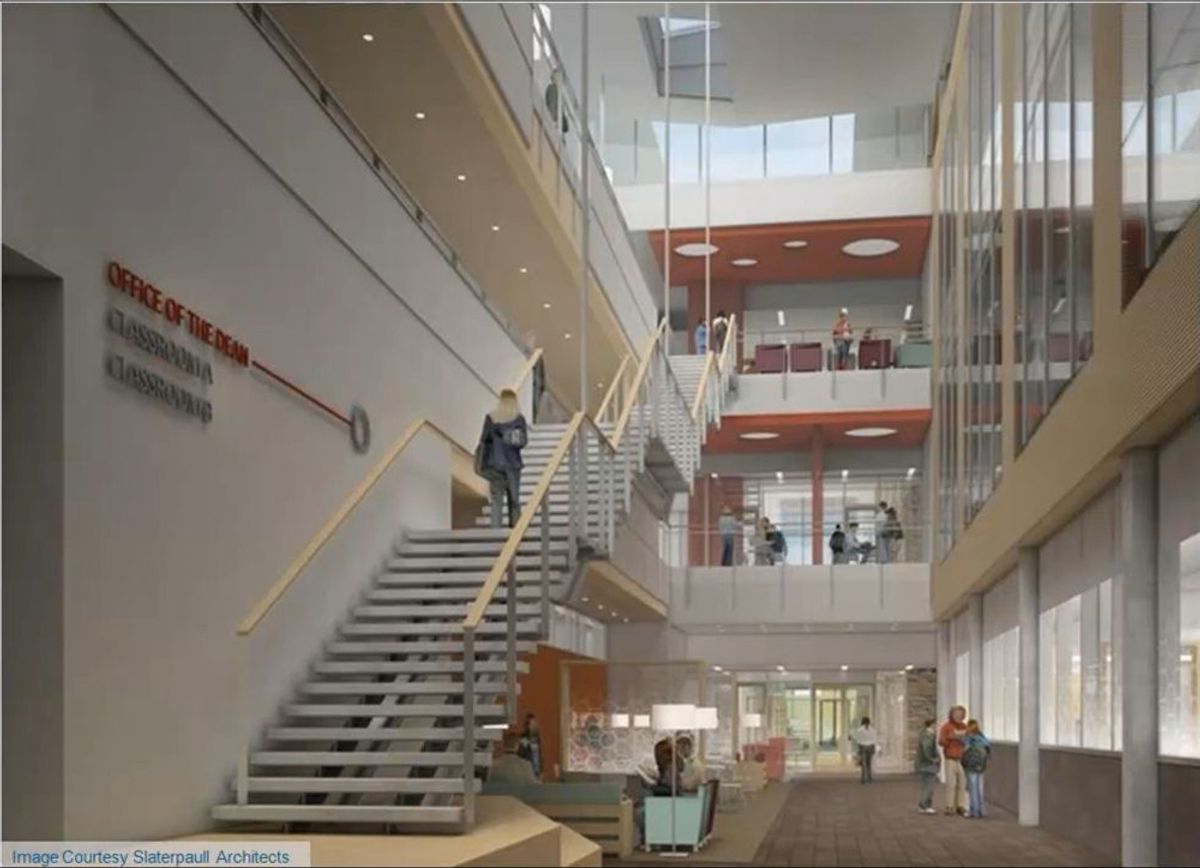Zero Envy - Title 24 Energy Code Compliance
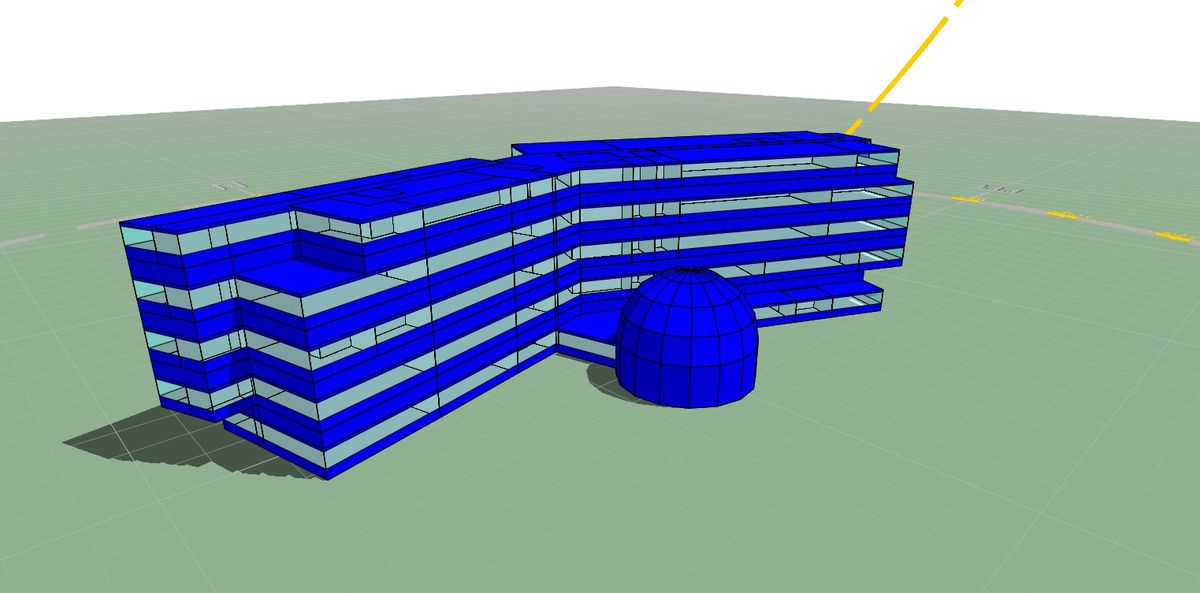
Case Study Description: Higher education institution in Northern California Zero Envy used IESVE to achieve 46% less Time Dependant Valuation (TDV) energy than Title 24, equating to $400,000 cost savings per year for this 95,000 sf new construction project. The project was also awarded $150,000 utility incentive which is the maximum available via the statewide incentive program for energy efficiency ‘Savings by Design’. This incentive helped to cover modeling and other design costs. Using IESVE, the Zero Envy team modeled and advised on the implementation of the following energy efficiency measures: Unique 4-pipe VAV terminal units: Adds a chilled water coil to terminal unit with a changeover valve & piping arrangement. This allows the AHU supply air temperature (SAT) to “float” in a wider range without jeopardizing zonal temperature and significantly reducing wasteful sub-cooling and reheat energy. VAV lab exhaust was applied to all laboratory zones, regardless of minimum air change requirements. This allows zones to use reduced minimum airflow rates during the majority of hours as it can increase as needed based on increased ventilation demand (e.g. fume hood sashes being raised) or heating/ cooling demand. This project is also pursuing LEED certification, and is on track to achieve a Gold rating. Medical Research Facility in Southern California: Using IESVE, the Zero Envy team were able to achieve 38% less Time Dependant Valuation (TDV) energy than Title 24, equating to $170,000 cost savings per year for this 60,000 sf existing building. The project was also awarded $500,000 utility incentive which is the maximum available for exceptional projects via the statewide incentive program for energy efficiency ‘Savings by Design’. This incentive helped to cover modeling and other design costs. Using IESVE, the Zero Envy team modeled and advised on the implementation of the following energy efficiency measures: VAV lab exhaust (very similar to higher education institution project, except that it utilized the centralized DCV system as described below) Centralized DCV system - This system provides a centralized air quality monitoring station and pneumatic tubing that extracts air from each individual room, tests it for various contaminants, and can raise alarms and controls the building automation system (BAS). The BAS uses concentrations to increase airflow rates to zones that need it - either from CO2 rise from occupants or more harmful contaminants. “California’s prescribed software and simulation engine does not accommodate the modeling of many features used in advanced building designs, including the major efficiency measures used in both of these case study projects. For this reason, our team chose to use the VE for its ability to handle custom systems and detailed tuning of HVAC sequences. In general, the VE allows us to model and inform most buildings and systems without constraint.” Greg Collins Principal Engineer, Zero Envy “Design innovations are becoming increasingly more challenging to model and quantify benefits for our clients. Utilizing VE helped quantify the performance benefits that our clients received from these novel designs.” Nathan Ho Associate Principal, P2S Engineering* * Zero Envy worked in partnership with P2S Engineering, the design engineer for both projects
Key Facts
View key facts for "Zero Envy - Title 24 Energy Code Compliance".
Tools Used in the Case Study
Discover which tools and technologies were used for "Zero Envy - Title 24 Energy Code Compliance".

Virtual Environment (IESVE)
Used by sustainable design experts around the globe, the Virtual Environment (IESVE) is an in-depth suite of integrated analysis tools for the design and retrofit of buildings. The platform leverages a world-leading simulation engine to allow cross-team collaboration between architects, engineers and contractors, from concept design to operation.

User Experience
View user experience for "Zero Envy - Title 24 Energy Code Compliance".
Zero Envy used IESVE to achieve 46% less Time Dependant Valuation (TDV) energy than Title 24, equating to $400,000 cost savings per year for this 95,000 sf new construction project. The project was also awarded $150,000 utility incentive which is the maximum available via the statewide incentive program for energy efficiency ‘Savings by Design’. This incentive helped to cover modeling and other design costs. Using IESVE, the Zero Envy team modeled and advised on the implementation of the following energy efficiency measures: Unique 4-pipe VAV terminal units: Adds a chilled water coil to terminal unit with a changeover valve & piping arrangement. This allows the AHU supply air temperature (SAT) to “float” in a wider range without jeopardizing zonal temperature and significantly reducing wasteful sub-cooling and reheat energy. VAV lab exhaust was applied to all laboratory zones, regardless of minimum air change requirements. This allows zones to use reduced minimum airflow rates during the majority of hours as it can increase as needed based on increased ventilation demand (e.g. fume hood sashes being raised) or heating/ cooling demand. This project is also pursuing LEED certification, and is on track to achieve a Gold rating. Medical Research Facility in Southern California Using IESVE, the Zero Envy team were able to achieve 38% less Time Dependant Valuation (TDV) energy than Title 24, equating to $170,000 cost savings per year for this 60,000 sf existing building. The project was also awarded $500,000 utility incentive which is the maximum available for exceptional projects via the statewide incentive program for energy efficiency ‘Savings by Design’. This incentive helped to cover modeling and other design costs. Using IESVE, the Zero Envy team modeled and advised on the implementation of the following energy efficiency measures: VAV lab exhaust (very similar to higher education institution project, except that it utilized the centralized DCV system as described below) Centralized DCV system - This system provides a centralized air quality monitoring station and pneumatic tubing that extracts air from each individual room, tests it for various contaminants, and can raise alarms and controls the building automation system (BAS). The BAS uses concentrations to increase airflow rates to zones that need it - either from CO2 rise from occupants or more harmful contaminants.
-
-
Higher education institution in Northern California Zero Envy used IESVE to achieve 46% less Time Dependant Valuation (TDV) energy than Title 24, equating to $400,000 cost savings per year for this 95,000 sf new construction project. The project was also awarded $150,000 utility incentive which is the maximum available via the statewide incentive program for energy efficiency ‘Savings by Design’. This incentive helped to cover modeling and other design costs. Using IESVE, the Zero Envy team modeled and advised on the implementation of the following energy efficiency measures: Unique 4-pipe VAV terminal units: Adds a chilled water coil to terminal unit with a changeover valve & piping arrangement. This allows the AHU supply air temperature (SAT) to “float” in a wider range without jeopardizing zonal temperature and significantly reducing wasteful sub-cooling and reheat energy. VAV lab exhaust was applied to all laboratory zones, regardless of minimum air change requirements. This allows zones to use reduced minimum airflow rates during the majority of hours as it can increase as needed based on increased ventilation demand (e.g. fume hood sashes being raised) or heating/ cooling demand. This project is also pursuing LEED certification, and is on track to achieve a Gold rating. Medical Research Facility in Southern California Using IESVE, the Zero Envy team were able to achieve 38% less Time Dependant Valuation (TDV) energy than Title 24, equating to $170,000 cost savings per year for this 60,000 sf existing building. The project was also awarded $500,000 utility incentive which is the maximum available for exceptional projects via the statewide incentive program for energy efficiency ‘Savings by Design’. This incentive helped to cover modeling and other design costs. Using IESVE, the Zero Envy team modeled and advised on the implementation of the following energy efficiency measures: VAV lab exhaust (very similar to higher education institution project, except that it utilized the centralized DCV system as described below) Centralized DCV system - This system provides a centralized air quality monitoring station and pneumatic tubing that extracts air from each individual room, tests it for various contaminants, and can raise alarms and controls the building automation system (BAS). The BAS uses concentrations to increase airflow rates to zones that need it - either from CO2 rise from occupants or more harmful contaminants. “California’s prescribed software and simulation engine does not accommodate the modeling of many features used in advanced building designs, including the major efficiency measures used in both of these case study projects. For this reason, our team chose to use the VE for its ability to handle custom systems and detailed tuning of HVAC sequences. In general, the VE allows us to model and inform most buildings and systems without constraint.” Greg Collins Principal Engineer, Zero Envy “Design innovations are becoming increasingly more challenging to model and quantify benefits for our clients. Utilizing VE helped quantify the performance benefits that our clients received from these novel designs.” Nathan Ho Associate Principal, P2S Engineering* * Zero Envy worked in partnership with P2S Engineering, the design engineer for both projects
-
-
Similar Case Studies
View similar case studies to "Zero Envy - Title 24 Energy Code Compliance".
